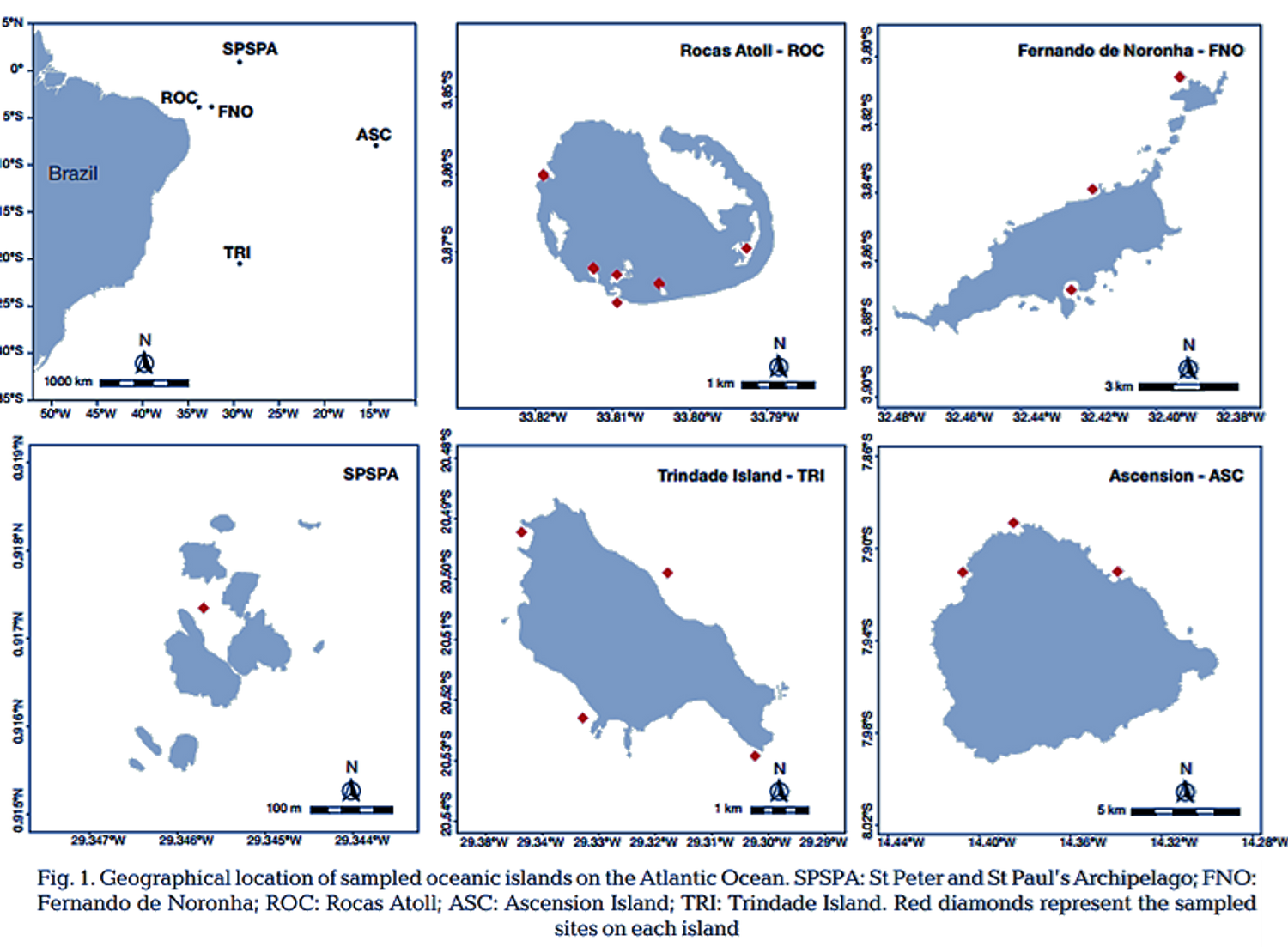By Débora S. Ferrari (UFSC)
In the MISSION ATLANTIC South Mid Atlantic Ridge (SOMAR) Case Study Area, Débora S. Ferrari, Lucas T. Nunes, Thiago C. Mendes, Carlos E. L. Ferreira and Sergio R. Floeter investigated the patterns of feeding pressure among reef fish across five oceanic islands in the Atlantic Ocean, four Brazilian islands plus the very isolated Ascension island (UK).
The research team found that the feeding pressure is modulated by reef characteristics and the presence of hyperdominant fish species that forage across multiple habitats.
Read the new paper ‘Hyperdominance and habitat composition drive reef fish foraging at Atlantic oceanic islands’ by Ferrari DS et al. that has been published in MEPS. DOI: https://doi.org/10.3354/meps14483
ABSTRACT:
Spatial and temporal patterns of benthic community structure play a crucial role in shaping reef habitats and have a direct impact on fish foraging dynamics, alongside density-dependence effects on the whole community. In isolated oceanic islands, the relatively low fish species richness often leads to the hyperdominance of a few species and a general reduced trophic redundancy. However, the influence of benthic habitat features and hyperdominant species on foraging selection in oceanic islands has been largely overlooked. This study aimed to investigate, using Remote Underwater Videos (RUVs), whether reef fishes consistently forage on specific habitats across five different oceanic islands in the Atlantic Ocean, especially focusing on the importance of the role of hyperdominant species. We analysed 295 RUVs, within 2m2 areas (3-15 m deep), totalling 49 hours of video. Photoquadrats were utilised to gauge benthic group coverage in the same habitats. Our results revealed five prevalent habitats and six fish trophic groups interacting with reef benthos. The intensity of feeding pressure varied across islands, depending on the diversity of habitats. Herbivores and omnivores exhibited the highest feeding pressure, with omnivores foraging on crustose coralline algae and macroalgae habitats, while herbivores primarily fed on habitats dominated by the epilithic algal matrix. Hyperdominant species forage in multiple habitats, indicating a comparatively high degree of dietary plasticity. Our findings also demonstrated that fish feeding pressure is influenced by both habitat features and fish biomass. Therefore, our study can provide valuable insights for prioritising the management of key species in isolated oceanic reefs.
Ferrari DS, Nunes LT, Mendes TC, Ferreira CEL, Floeter SR (2024) Hyperdominance and habitat composition drive reef fish foraging at Atlantic oceanic islands. Mar Ecol Prog Ser 726:1-15. DOI: https://doi.org/10.3354/meps14483

